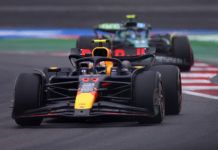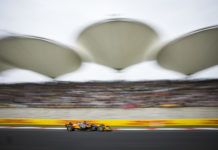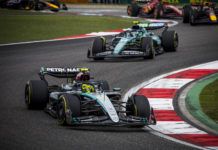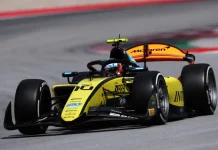Haas arrives in Australia for the returning Australian Grand Prix, on a heavily revised Albert Park circuit, without a spare chassis, as drivers’ Kevin Magnussen and Mick Schumacher add on track changes.
After a hefty crash in Q2 at the Saudi Arabian Grand Prix two weeks ago, Schumacher was pulled from Sunday’s Grand Prix for fear over spare parts shortages impacting the team’s chances going into Australia – owing to the logistical side of transporting goods to the country.
Haas team Principal Steiner quickly made the decision for the race in Jeddah to run only one car even before a decision was made on Schumacher’s medical condition. Ultimately he was declared fit to race, but did not take part in the end. With the flyaway events on and the cars brand new, the question arose about spare parts availability.
Steiner noted that the damaged car had to be flown into Australia directly from Saudi Arabia due to customs and only after it reached here, they have sent it back to Europe for it to be fixed by Imola. “The situation with spare parts is as expected at race number two after a big crash,” he explained to media including FormulaRapida.net.
“We have every part but we have no abundance of it… On the spare chassis we haven’t got one here because we had to send it back I think at the beginning of the week to Europe to get it ready for Imola. We had to bring it here [Australia] for Customs formalities, it had to be entered here then shipped back to Europe from here and it’s on its way back now.”
Steiner was subsequently asked whether he has instructed his drivers to approach this weekend more tentatively in the knowledge of the spare chassis situation. “I think you can not approach it differently,” he said. “The drivers are aware of the situation that there is no spare chassis but that can happen sometimes.
“I’m not panicking until something happens, then we would deal with it as it comes along. You cannot say to go out there and drive slowly, that doesn’t make sense.” Haas driver Schumacher came out of the crash relatively unscathed in the end, after a trip to hospital after being extracted from the car by the Jeddah circuit’s medical team.
“There were no after-effects still so [I was] ready to race but we [didn’t race on Sunday] for specific reasons and I’m happy to be here now,” admitted Schumacher when asked by FormulaRapida.net if he had any issues once going back home.
Teammate Magnussen was sole Haas representative in Saudi Arabia, but struggled with an issue of his own throughout the arduous weekend. “My neck is OK now but it had been sore ever since because I’ve trained it so much, I don’t think it was holding me back in the race,” assured Magnussen when asked on the issue he suffered with his neck at the high-speed Jeddah track, which he attributed to a lack of training in his year away from F1.
“I couldn’t hold my head up so I was leaning on the headrest basically from the beginning of the race but I kind of got used to driving like that in the race, so I don’t think it was costing me lap time. In qualifying in Jeddah in Q3 I couldn’t drive that last run so I got compromised there but I will just take a few races and the strength will build back. It’s tough at the moment but still having fun.”
Heading into a long-anticipated Grand Prix in Melbourne, a city F1 hasn’t visited since the infamous curtailed 2020 weekend which was cancelled hours before FP1 was due to start due to positive COVID-19 cases, Schumacher and Magnussen were asked for their thoughts on the changes – including re-profiling Turns 1, 3, 6, 11 (previously 13) and 13 (previously 15), removing the Turn 9 and 10 chicane altogether and boasting four DRS zones.
“It is new for most drivers but not for me,” said Schumacher. “I’ve never driven here so I guess it’s just a normal track for me because I haven’t driven here. On the track walk it looks good, and on the DRS zones we’ll figure how to attack that but at the end just like any other track it’s just about trying to be in the detection zone behind and try and get by with the DRS and try and drive off. It will be an interesting game but business as usual.”
Magnussen on the other hand is more outspoken, and believes the changes are “over the top”. The Dane has raced at the circuit – that he secured a debut podium at with McLaren in 2014 – six times, excluding his DNS in 2015.
“When I first saw the [updated Albert Park circuit] layout for this weekend I thought that some of it was maybe over the top,” Magnussen admits. “Removing Turn 9 and 10 I don’t think they needed to do that but they’ve made a big effort to make the show better, for the track to try and do their best to improve racing is a great thing but let’s see how it goes in the race.
“I think there’s different opinions of what’s good racing – too easy overtaking can be bad as well which puts everyone in their right position in terms of pace, it’s kind of like a balance. Some tracks have the right balance to still have some racing and action, but also some opportunities to defend. If you’re just a little bit slower and you get overtaken then that’s not a good thing. It’s about balance I think so we’ll see how it is on this track.”
The story was written by Danny Herbert
Here’s all the details of track, DRS and more for Aus GP



















